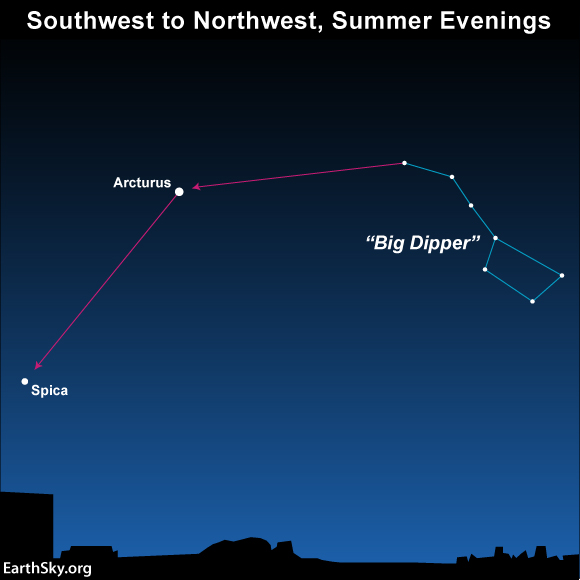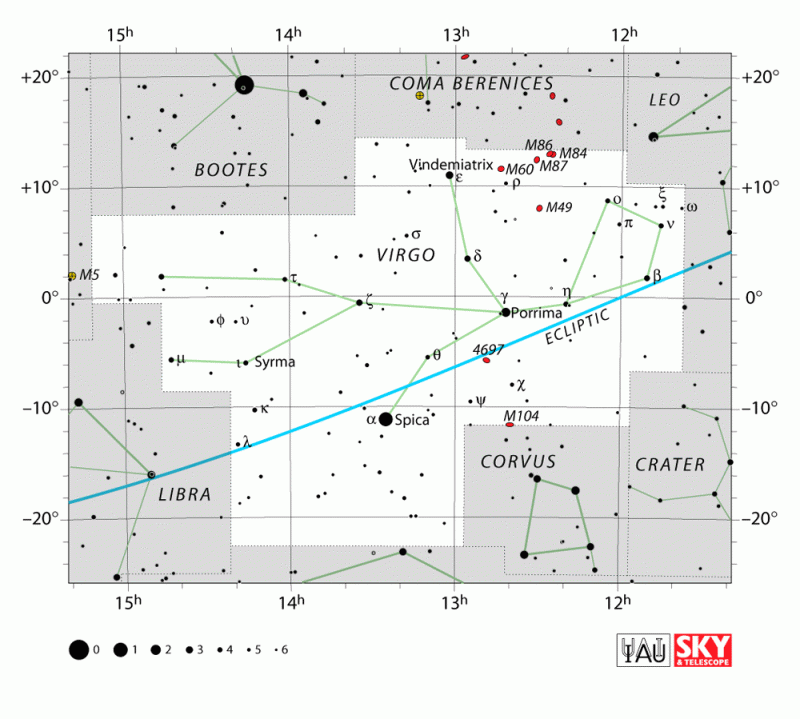On August 4, 5 and 6, 2019, watch for the waxing crescent moon to move past Spica, the brightest star in the constellation Virgo the Maiden. It’s best to catch the moon and Spica at relatively early evening, especially from northerly latitudes. The moon and Spica are fairly high up at nightfall, but then follow the sun beneath the horizon by around mid-evening.
Visit this U.S. Naval Observatory page to know the moon and Spica’s setting time in your sky.
On all of these evenings, the moon is a waxing crescent. Watch for it in the west, the sunset direction, beginning shortly after sunset as day fades to night. Look for the moon and Spica to be closest around August 5. On the following evening, August 6, the moon will be a larger crescent, still near Spica on our sky’s dome.

Spica is one of four 1st-magnitude stars shining close to the ecliptic, which is the plane of Earth’s orbit around the sun, projected onto our sky. The green line on the chart at top represents the ecliptic. There are three other bright stars near the ecliptic. They are Antares of the constellation Scorpius, Aldebaran of the constellation Taurus, and Regulus of the constellation Leo.
The moon and planets always travel near the ecliptic in our sky. That’s because the moon orbits Earth, and the planets orbit the sun, on nearly the same plane that Earth orbits the sun. Hence, the moon in its monthly orbit around Earth always sweeps close to Spica every month; and all the solar system planets always pass near Spica at certain points in their orbits.
For instance, on this date two years ago – August 4, 2017 – the king planet Jupiter shone rather close to Spica on the sky’s dome. One year later – on August 4, 2018 – Jupiter paired up with the modestly-bright zodiacal star Zubenelgenubi. This year, in 2019, Jupiter is found in the vicinity of the star Antares.
The ecliptic also shows you the sun’s annual path in front of the constellations of the zodiac. If we could see the stars during the daytime, we’d see the sun crossing in front of the constellation Virgo from about September 17 to October 31.
The sun swings by the all the stars and planets of the zodiac every year, and the moon does likewise … but it does so every month. Watch for the moon to pair up with Spica on or near August 5, and then to couple up with Jupiter on or near August 9.

Bottom line: On August 4 to 6, 2019, the moon is a waxing crescent in the sunset direction. Look for it shortly after sunset, as day fades to night. The moon will be below Spica August 4, closest to it August 5 and above it August 6.











